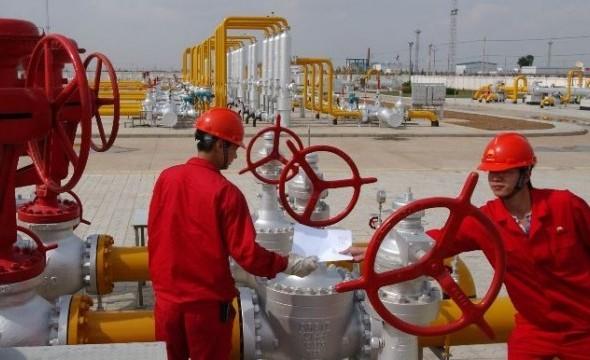
2016: ASIAN MARKET TROUBLE

Asia's fuel oil market faces more trouble in 2016 because of plunging demand from independent Chinese refiners and as Asia's slowing economies dent consumption in power plants and seaborne trading.
With China's economy growing at its slowest pace in a generation and Asia's trading powerhouses Japan and South Korea struggling to create growth, Asian fuel oil demand for container ships should stagnate in 2016, putting more pressure on a market that struggled last year.
Rates for dry-bulk ships have also hit several record lows since December as overcapacity clashes with slowing demand.
As a result, Asia's benchmark Singapore 180cst fuel oil FO180-SIN in 2016 will average $242.21 per tonne, about 21 percent less than in 2015, BMI Research forecasts.
Fuel oil should also lose value relative to crude through 2016. The spread between 180cst fuel oil in Singapore and Dubai crude is expected to average minus $11 a barrel this year, down from an average discount of $6.75 a barrel in 2015, said consultants Energy Aspects.
"Unfortunately things are not looking so bright for the fuel oil market in 2016 due to a number of factors on both the supply and demand side," said Ralph Leszczynski of shipping brokerage Banchero Costa.
Front-month Singapore 380cst fuel oil swaps, the grade mainly used to fuel ocean-going ships, in 2015 averaged about 50 percent less than the previous year and have dropped by almost another 50 percent since the start of 2016.
TEAPOTS PREFER CRUDE
The economic slowdown will add to an expected plunge in fuel oil demand as the majority of China's independent refiners, known as teapots, turn to crude oil instead of fuel oil as their primary feedstock for making fuels such as gasoline and diesel.
The Chinese teapots switch from fuel to crude should be one of the biggest factors affecting demand in 2016.
More than 20 teapots have qualified to import crude directly with a quota of 37.6 million tonnes for 2015. Barclays analysts expect this quota to increase to 87.6 million tonnes for 2016 and, in effect, reduce this year's fuel oil demand for China by an estimated 15 percent.
Chinese fuel oil imports in 2015 fell 12.9 percent from the previous year to 15.4 million tonnes, according to customs data released this week.
"The latest leg of weakness (in China fuel oil demand) comes from a continued shift away from fuel oil to crude as a feedstock," said Barclays Research analysts in January.
While declining Chinese demand will weigh on the high-sulphur fuel oil market, the consumption of low-sulphur fuel oil should decline more as well since Japanese demand JP-FO-MDMD for the grade will drop as it depends on less oil-fired electric power.
"Fuel oil consumption is expected to fall in Japan... as nuclear power plants are restarted, denting the country's demand for fossil fuels," said Banchero Costa's Leszczynski.
MORE SHIPS, SLOWING TRADE
Stagnant shipping fuel, or bunker, consumption will be a further demand burden on the high-sulphur fuel oil market.
BMI said that bunker demand will suffer from overcapacity in the shipping fleet and which will cause ships to idle and vessels to sail at low speeds to save on fuel costs.
Despite some short-term spikes, Singapore sales of marine fuels have been largely flat since 2011 at an average of about 3.6 million tonnes a month.
Though 2016 should add to the misery of 2015, some supply tightness may support the fuel oil market as Russian exports could decline, reducing the flow of cargoes from Europe to Asia.
An increase in Russian fuel oil export duties expected in 2016 that will make them as expensive as crude may cause refiners to cut back processing.
"In the current low oil price environment, Russian fuel oil exports are now bringing in almost no net revenue to refineries," said Energy Aspects.
-----
More:
CHINA'S OIL & GAS DEMAND WILL UP




